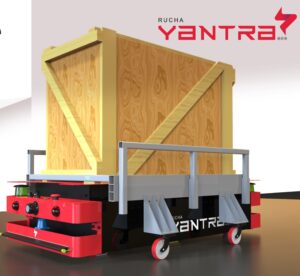 Welcome back as we conclude the Machine Learning (ML) series with this last interesting piece. We began the series by understanding what ML means. Then we looked at the different technical approaches that can be taken under ML. In the last blog, we focused on the impact of ML on manufacturing. We have tried to bring ML in more simplistic terms to our friends from manufacturing. And thus, we shall conclude the series with a piece on how you can use ML to enhance warehouses – a crucial component of the manufacturing cycle.
Welcome back as we conclude the Machine Learning (ML) series with this last interesting piece. We began the series by understanding what ML means. Then we looked at the different technical approaches that can be taken under ML. In the last blog, we focused on the impact of ML on manufacturing. We have tried to bring ML in more simplistic terms to our friends from manufacturing. And thus, we shall conclude the series with a piece on how you can use ML to enhance warehouses – a crucial component of the manufacturing cycle.
Advancements in technology are not new to warehouses, and ML is just the latest type on the block. However, it is significantly more impactful and rewarding. How? Read on!
Improves Supply Chain Management:
ML systems are predominantly designed to pick up patterns. If presented with data on your entire supply chain cycle, it may identify underlying patterns, point out defect-prone situations and areas with the scope of improvement. Such an automated and computer-driven analysis can render the entire supply chain more efficient. While humans can and still do much of the same things, it takes them significantly more time with the possibility of missing out on errors.
Integrates Automation into Warehouse Production:
Alibaba runs its warehouses almost entirely on robots. Over 70% of tasks that would usually require a human are performed by robots. Likewise, many companies are moving toward automated warehouses wherein jobs from preparing packages for shipment to tracking inventory have been automated. All the robots in such warehouses are backed by ML and thus, improve their efficacy over time through continuous ‘learning.’
Over 70% of tasks that would usually require a human are performed by robots. Likewise, many companies are moving toward automated warehouses wherein jobs from preparing packages for shipment to tracking inventory have been automated. All the robots in such warehouses are backed by ML and thus, improve their efficacy over time through continuous ‘learning.’
While the initial investment is quite a lot and ML-powered automation may eliminate many jobs, it is highly efficient and rewarding.
End-to-end Product Organization:
Humans may find the job of organizing products in a warehouse monotonous. Registering the entry of a shipment, placing them at the designated location and retrieving it when required, keeping an accurate track of the inventory, etc., can prove time-consuming. However, when ML-powered systems are handed over the same tasks, they take only a fraction of the time. The tasks are completed a lot more quickly, and without errors, your employees are left with more time to perform tasks that only humans can accomplish.
Reduces Waste:
Consumable products such as food and beverages, dairy, etc., have a specific expiration date. They must be sold and moved out of the warehouse before the particular date; otherwise, they are discarded. They must be thrown away as waste – a revenue loss for the company. Humans may forget to check the expiration date or fail to keep track, and thus, products might go to waste. ML can help solve this issue. ML-powered machines keep track of the sell-by dates and ensure that the products with nearer expiration dates are moved out first.
Improves Warehouse Safety:
Large warehouses require large machinery to move products around and have hard-to-reach places which are difficult to negotiate. An accident involving a large machine can prove to be fatal, let alone dangerous for an employee. However, such a threat to life can be eliminated if you integrate intelligent ML-powered machines into the warehouse. The likelihood of accidents is highly reduced if robots drive large machines or store inventory in hard-to-reach places. And even if an accident occurs, a human would not suffer the consequences.
Although relatively new, machine learning has begun showing its rewards across the world. As more and more warehouse owners implement ML-powered systems, we shall see greater and newer benefits. One thing is for sure, Machine Learning has the power to revolutionize warehousing operations.
We hope we have been able to provide meaningful value to our readers regarding Machine Learning. Stay tuned to our Knowledge Corner as we take up another exciting topic – the impact of robotics in healthcare. We are dedicated to using next-gen technologies in our products and delivering their benefits to our customers.



